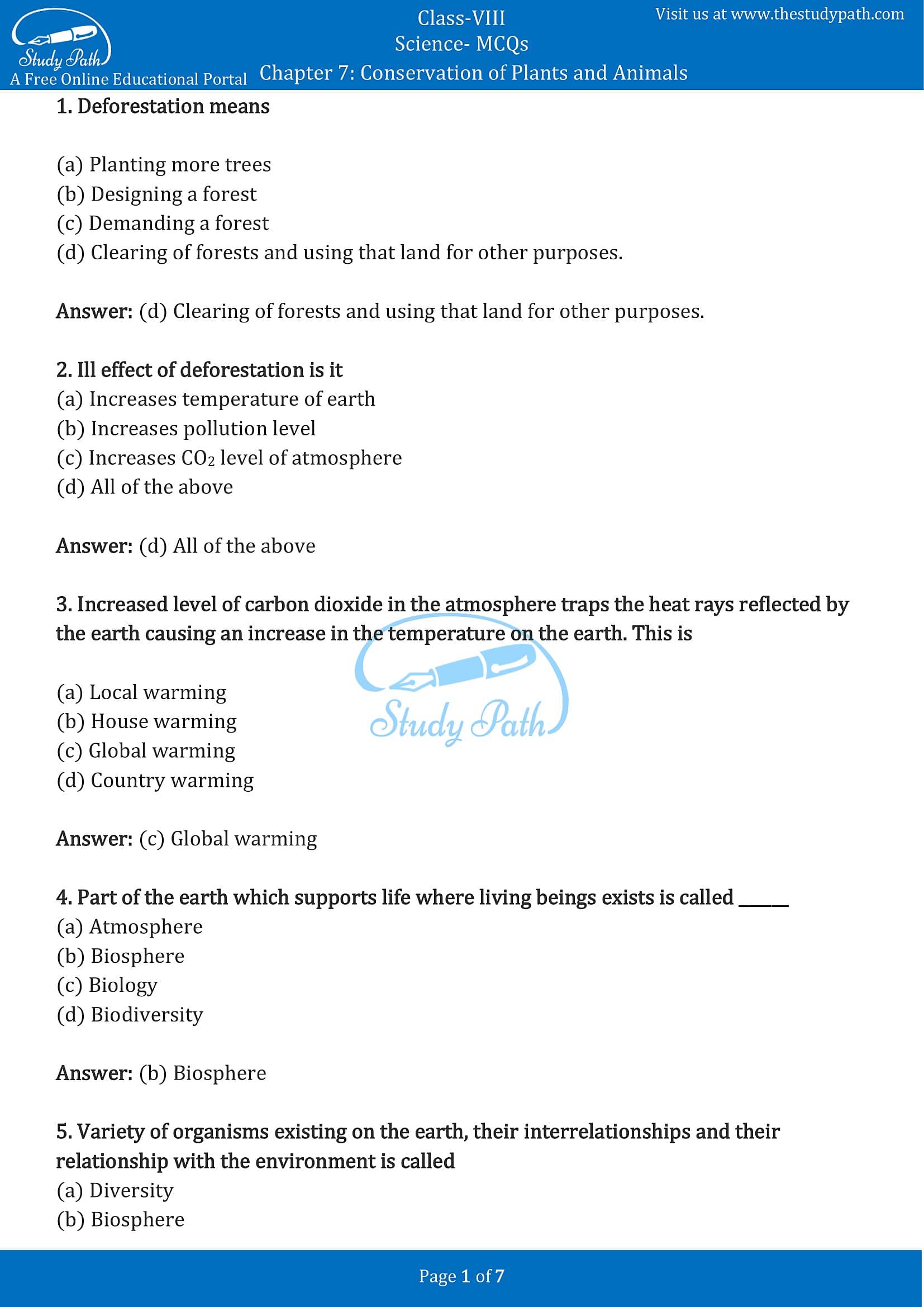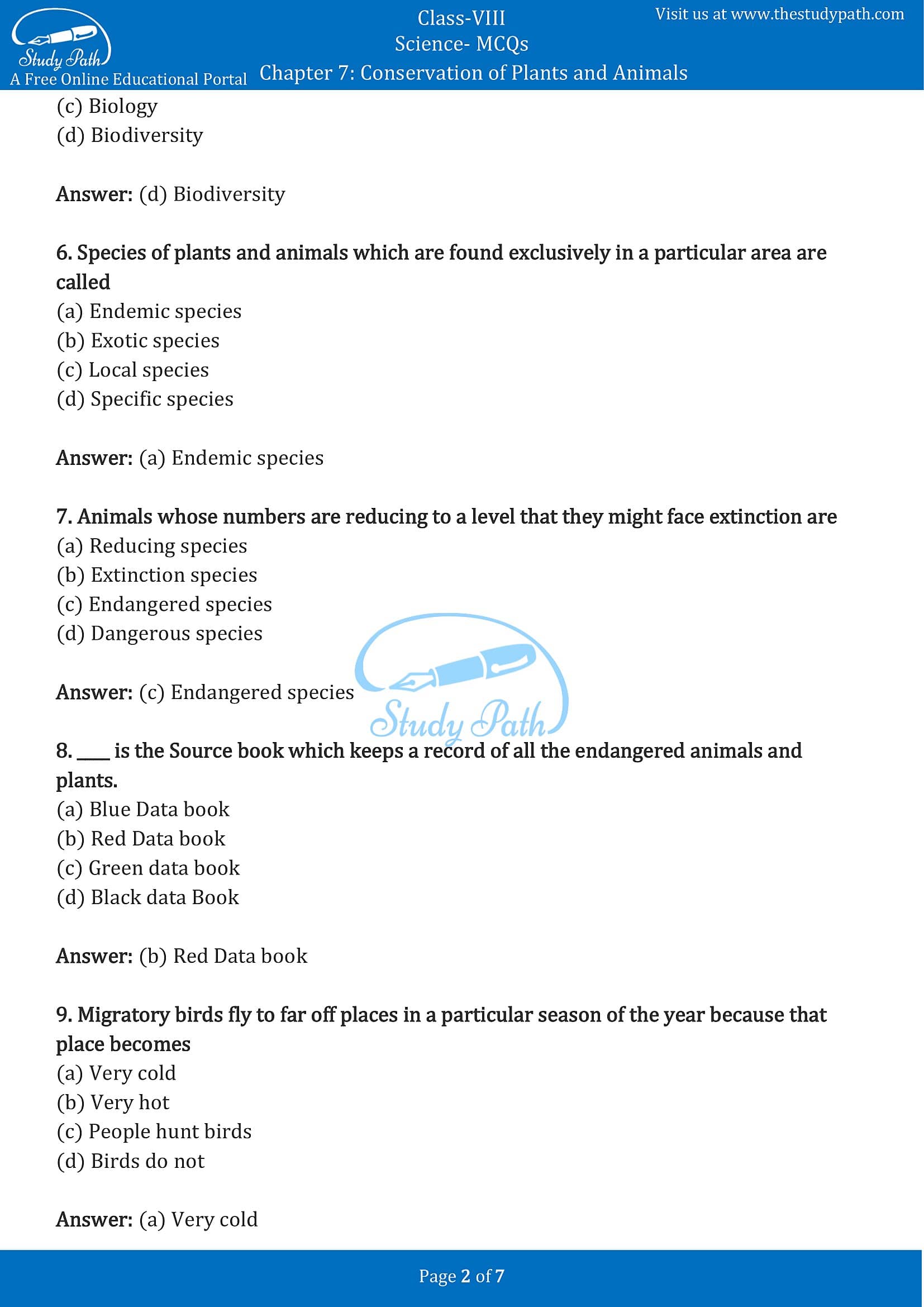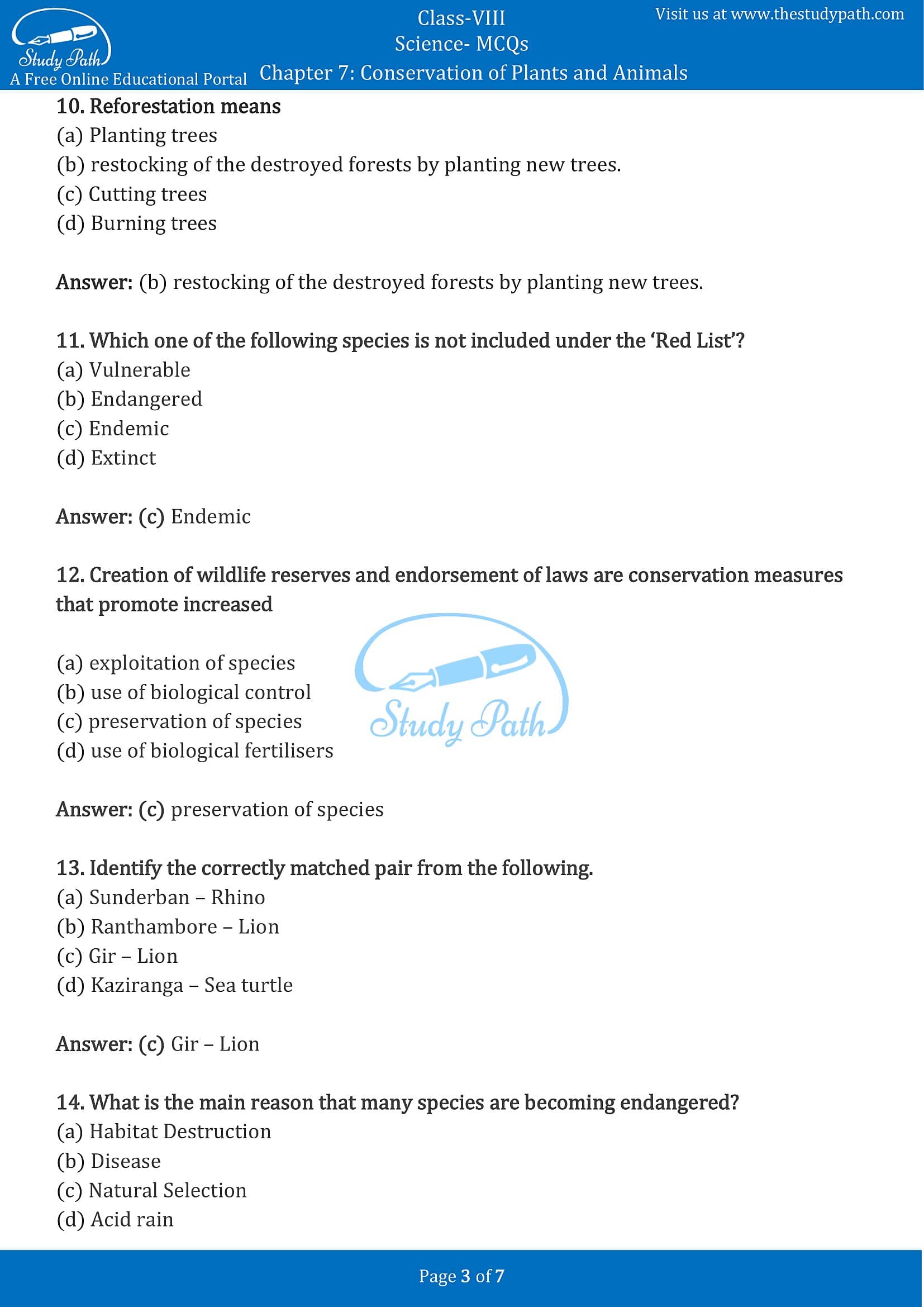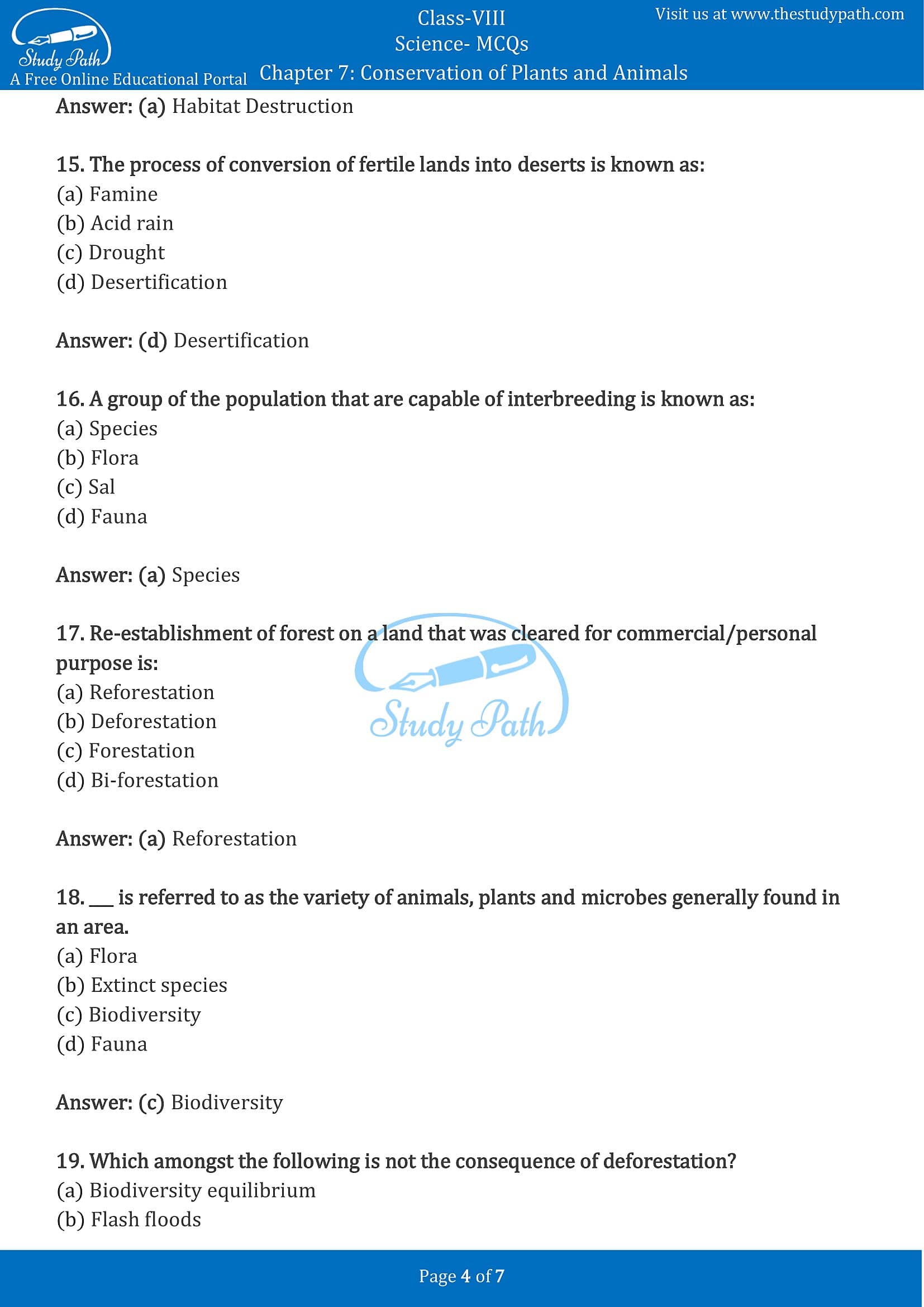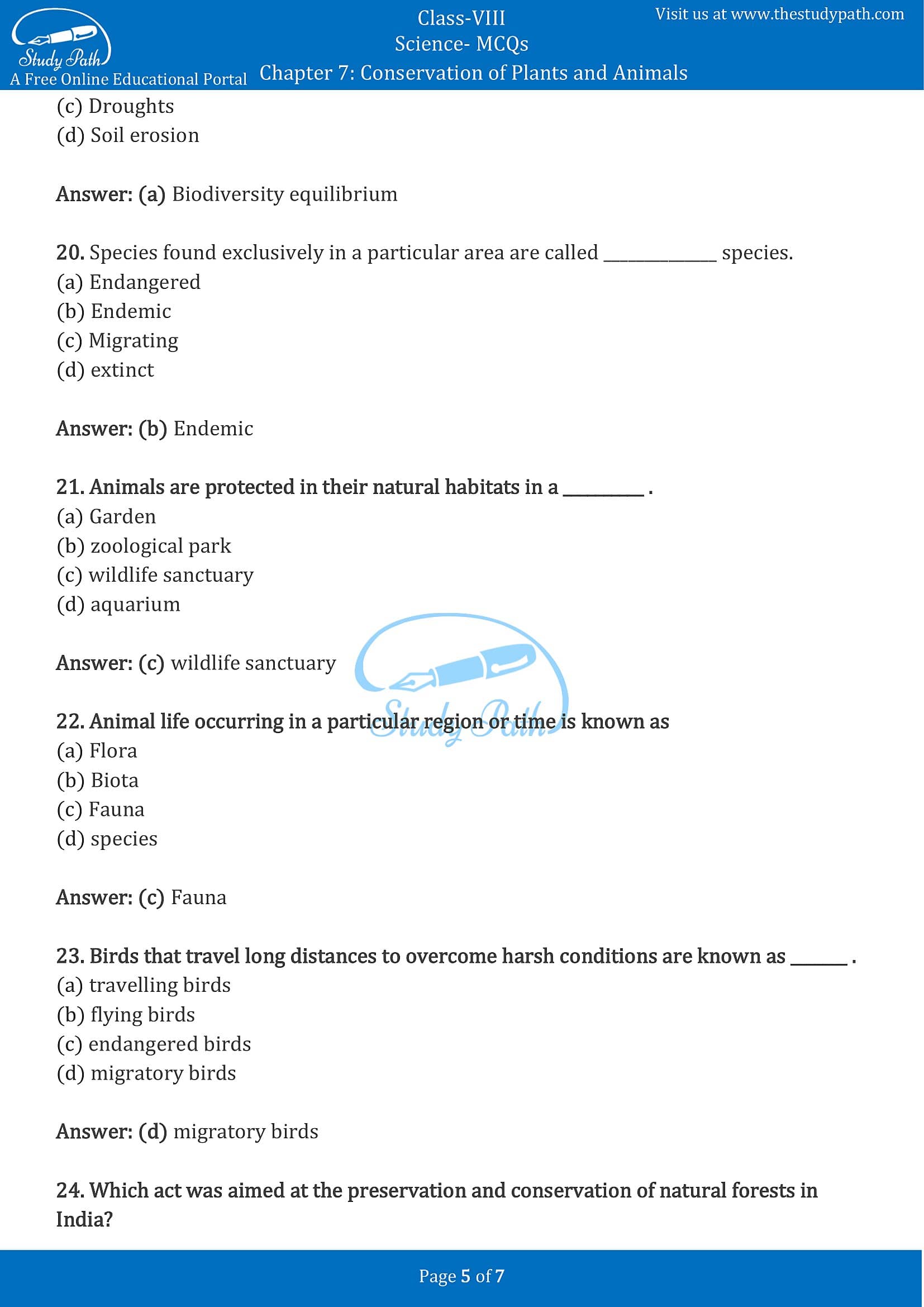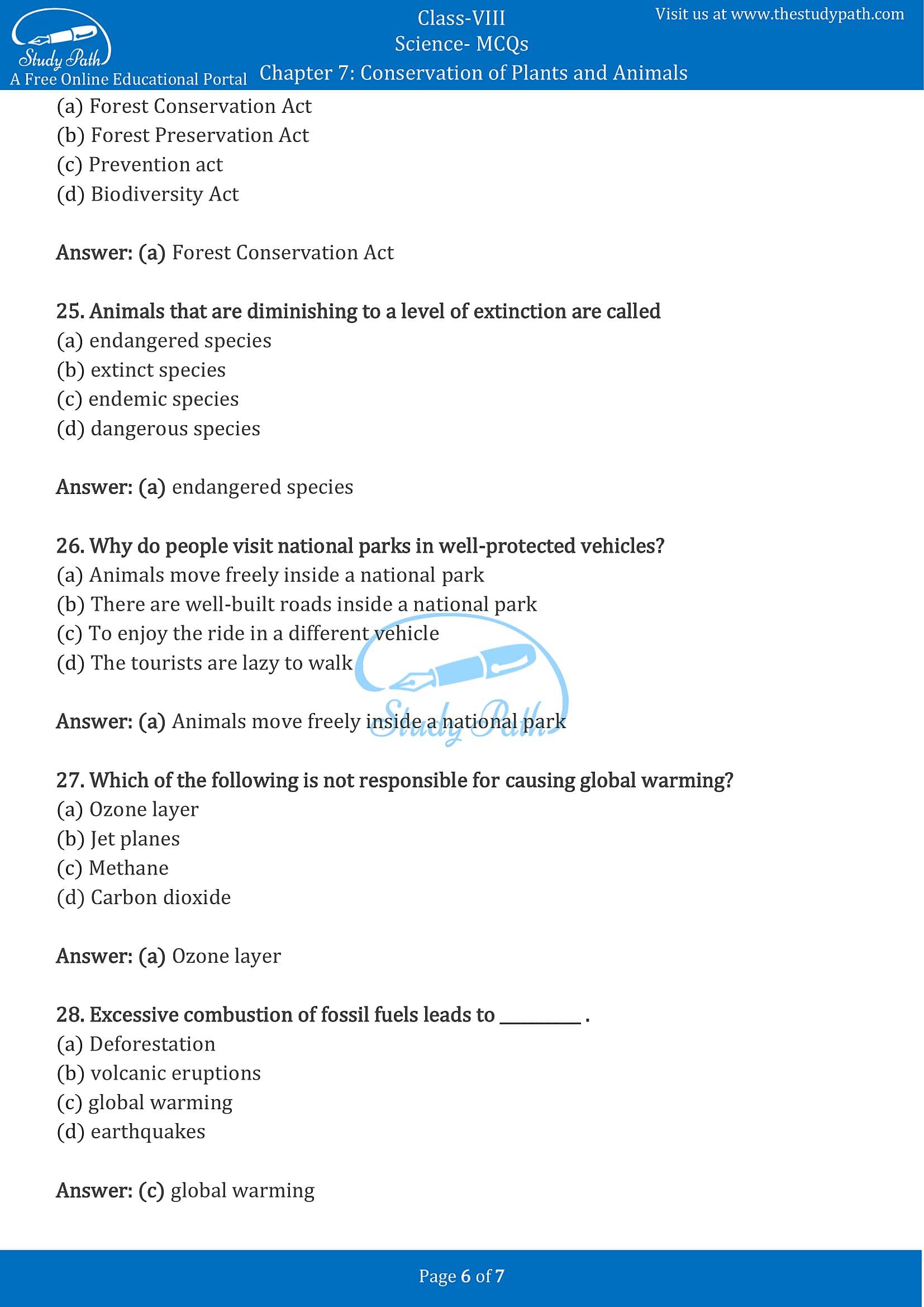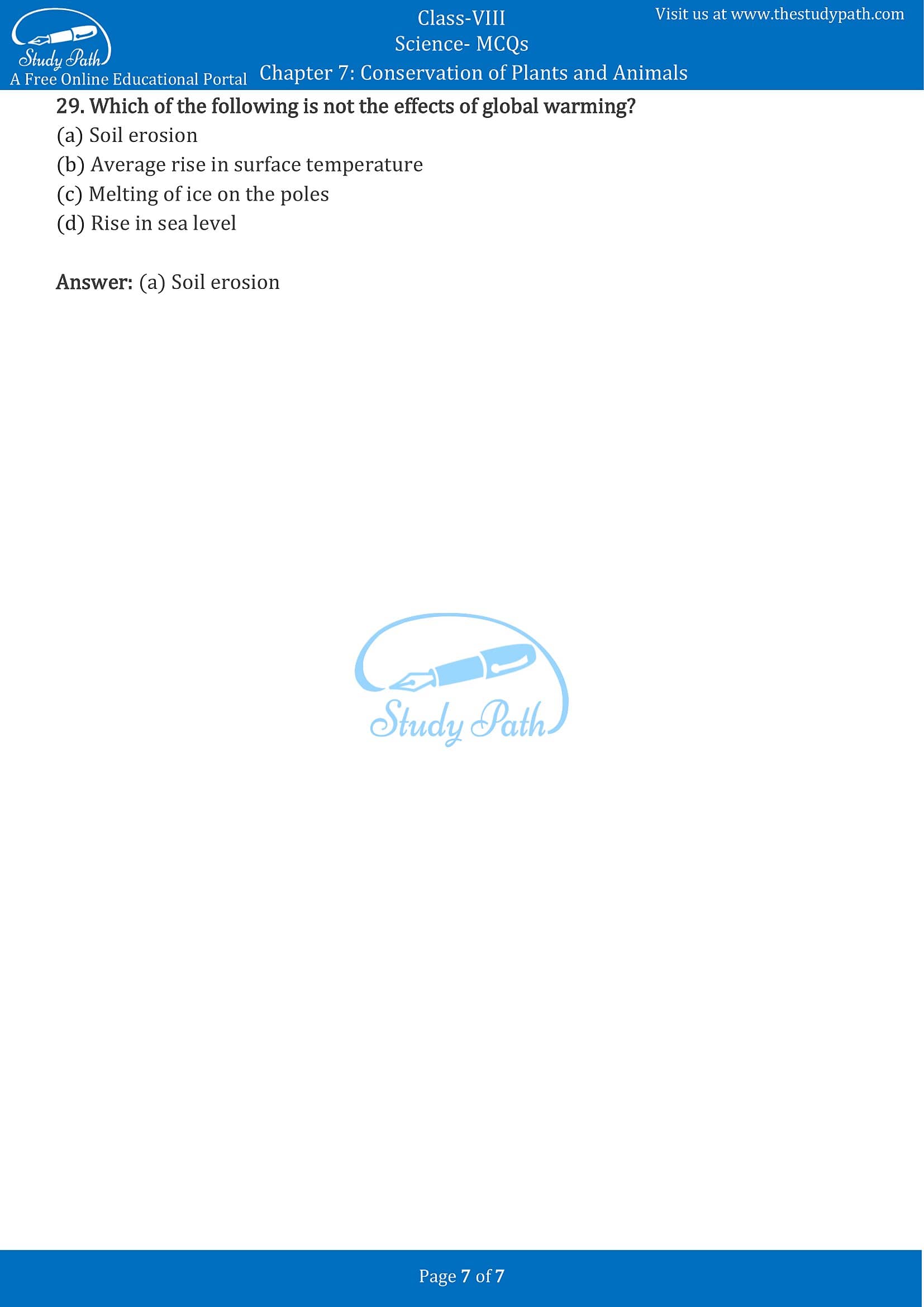Class 8 Science Chapter 7 Conservation of Plants and Animals MCQ with Answers
Class 8 Science Chapter 7 Conservation of Plants and Animals MCQ (Multiple Choice Questions) with Answers is available here in PDF format. CBSE Class 8 Science Conservation of Plants and Animals MCQ NCERT helps the students to understand the concepts thoroughly and to score good marks. Practising these MCQs will help you to answer every question that is being asked in the exams. Students can solve NCERT Class 8 Science Conservation of Plants and Animals MCQ to know their preparation level.
Conservation of Plants and Animals Class 8 MCQ with Answers
Multiple Choice Questions (MCQs)
1. Deforestation means
(a) Planting more trees
(b) Designing a forest
(c) Demanding a forest
(d) Clearing of forests and using that land for other purposes.
Answer: (d) Clearing of forests and using that land for other purposes.
2. Ill effect of deforestation is it
(a) Increases temperature of the earth
(b) Increases pollution level
(c) Increases CO2 level of atmosphere
(d) All of the above
Answer: (d) All of the above
3. Increased level of carbon dioxide in the atmosphere traps the heat rays reflected by the earth causing an increase in the temperature on the earth. This is
(a) Local warming
(b) House warming
(c) Global warming
(d) Country warming
Answer: (c) Global warming
4. Part of the earth which supports life where living beings exists is called ______
(a) Atmosphere
(b) Biosphere
(c) Biology
(d) Biodiversity
Answer: (b) Biosphere
5. Variety of organisms existing on the earth, their interrelationships and their relationship with the environment is called
(a) Diversity
(b) Biosphere
(c) Biology
(d) Biodiversity
Answer: (d) Biodiversity
6. Species of plants and animals which are found exclusively in a particular area are called
(a) Endemic species
(b) Exotic species
(c) Local species
(d) Specific species
Answer: (a) Endemic species
7. Animals whose numbers are reducing to a level that they might face extinction are
(a) Reducing species
(b) Extinction species
(c) Endangered species
(d) Dangerous species
Answer: (c) Endangered species
8. ____ is the Source book which keeps a record of all the endangered animals and plants.
(a) Blue Data book
(b) Red Data book
(c) Green data book
(d) Black data Book
Answer: (b) Red Data book
9. Migratory birds fly to far off places in a particular season of the year because that place becomes
(a) Very cold
(b) Very hot
(c) People hunt birds
(d) Birds do not
Answer: (a) Very cold
10. Reforestation means
(a) Planting trees
(b) restocking of the destroyed forests by planting new trees.
(c) Cutting trees
(d) Burning trees
Answer: (b) restocking of the destroyed forests by planting new trees.
11. Which one of the following species is not included under the ‘Red List’?
(a) Vulnerable
(b) Endangered
(c) Endemic
(d) Extinct
Answer: (c) Endemic
12. Creation of wildlife reserves and endorsement of laws are conservation measures that promote increased
(a) exploitation of species
(b) use of biological control
(c) preservation of species
(d) use of biological fertilisers
Answer: (c) preservation of species
13. Identify the correctly matched pair from the following.
(a) Sunderban – Rhino
(b) Ranthambore – Lion
(c) Gir – Lion
(d) Kaziranga – Sea turtle
Answer: (c) Gir – Lion
14. What is the main reason that many species are becoming endangered?
(a) Habitat Destruction
(b) Disease
(c) Natural Selection
(d) Acid rain
Answer: (a) Habitat Destruction
15. The process of conversion of fertile lands into deserts is known as:
(a) Famine
(b) Acid rain
(c) Drought
(d) Desertification
Answer: (d) Desertification
16. A group of the population that are capable of interbreeding is known as:
(a) Species
(b) Flora
(c) Sal
(d) Fauna
Answer: (a) Species
17. Re-establishment of forest on a land that was cleared for commercial/personal purpose is:
(a) Reforestation
(b) Deforestation
(c) Forestation
(d) Bi-forestation
Answer: (a) Reforestation
18. ___ is referred to as the variety of animals, plants and microbes generally found in an area.
(a) Flora
(b) Extinct species
(c) Biodiversity
(d) Fauna
Answer: (c) Biodiversity
19. Which amongst the following is not the consequence of deforestation?
(a) Biodiversity equilibrium
(b) Flash floods
(c) Droughts
(d) Soil erosion
Answer: (a) Biodiversity equilibrium
20. Species found exclusively in a particular area are called ______________ species.
(a) Endangered
(b) Endemic
(c) Migrating
(d) extinct
Answer: (b) Endemic
21. Animals are protected in their natural habitats in a __________ .
(a) Garden
(b) zoological park
(c) wildlife sanctuary
(d) aquarium
Answer: (c) wildlife sanctuary
22. Animal life occurring in a particular region or time is known as
(a) Flora
(b) Biota
(c) Fauna
(d) species
Answer: (c) Fauna
23. Birds that travel long distances to overcome harsh conditions are known as _______ .
(a) travelling birds
(b) flying birds
(c) endangered birds
(d) migratory birds
Answer: (d) migratory birds
24. Which act was aimed at the preservation and conservation of natural forests in India?
(a) Forest Conservation Act
(b) Forest Preservation Act
(c) Prevention act
(d) Biodiversity Act
Answer: (a) Forest Conservation Act
25. Animals that are diminishing to a level of extinction are called
(a) endangered species|
(b) extinct species
(c) endemic species
(d) dangerous species
Answer: (a) endangered species
26. Why do people visit national parks in well-protected vehicles?
(a) Animals move freely inside a national park
(b) There are well-built roads inside a national park
(c) To enjoy the ride in a different vehicle
(d) The tourists are lazy to walk
Answer: (a) Animals move freely inside a national park
27. Which of the following is not responsible for causing global warming?
(a) Ozone layer
(b) Jet planes
(c) Methane
(d) Carbon dioxide
Answer: (a) Ozone layer
28. Excessive combustion of fossil fuels leads to __________ .
(a) Deforestation
(b) volcanic eruptions
(c) global warming
(d) earthquakes
Answer: (c) global warming
29. Which of the following is not the effects of global warming?
(a) Soil erosion
(b) Average rise in surface temperature
(c) Melting of ice on the poles
(d) Rise in sea level
Answer: (a) Soil erosion
At Study Path, you can also learn more about science chapter 7 Conservation of Plants and Animals by accessing the free exhaustive list of study materials and resources related to the chapter such as NCERT Solutions, Important Questions and Extra Questions.
